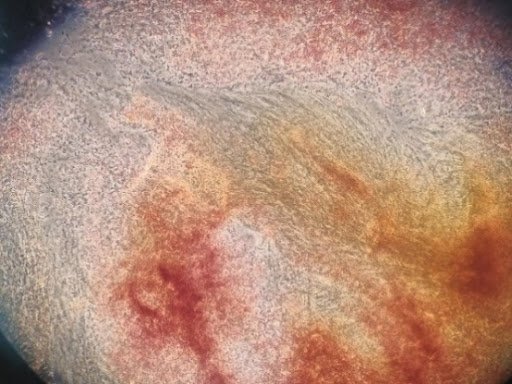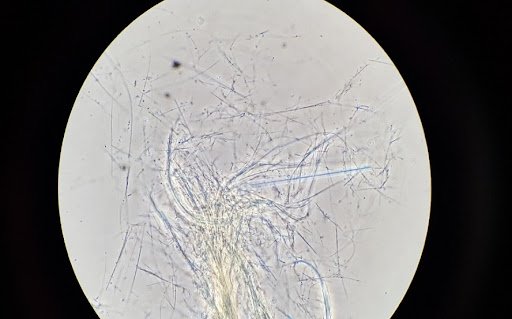What is Quercetin?
What: Quercetin belongs to the class of polyphenols, flavonoids in particular, found in the skin of the berry and the green of the plant.
Normally, quercetin exists in wine in a glycolated state, but in certain reds without a high level of tannins vs. colour, the bond can be broken and the aglycone form precipitates.
In the wine the curious sediment is unappealingly viscous. Pouring it out of the bottle slowly, you can see it come out in "snotty" clumps.
Under the microscope there are masses of long, extremely fine golden "hairs", only a micron or so wide. And bear a striking similarity to the clumps of fine strands of volcanic glass called "Pele's hair" that collect after eruptions.
Why: Quercetin is a natural component of grape skins and leaves. Quercetin glycosides are extracted from the grape skins during fermentation and maceration. The quercetin may crystallise, incorporating some water molecules in the process and form a slimy sometimes shiny deposit.
Positives: It is odourless and tasteless, and absolutely not dangerous for human health – quite the opposite, given quercetins antioxidant properties.
Problems: Pouring it out of the bottle slowly, you can see it come out in "snotty" clumps. With a slightly blue gray hue. This make it unappealing for the consumer
Solutions:
the use of enzymes or yeasts with glycosidic activity to promote early hydrolysis of glycosidic quercetin. Choosing enzymes that also have high anthocyanin extraction, which can also aid in quercetin stabilization.
avoiding addition of tannins in the initial stages of vinification, as this could complex the anthocyanins that would be ready to copigment with the quercetin;
Oxygenation - the use of barrels or micro-oxygenation systems, that allow a high exchange of oxygen, guaranteeing a good volume/surface contact ratio, which could encourage the precipitation of aglycone during maturation;
keeping sulphur dioxide at minimum levels
the addition in the case of medium-risk wines of mannoproteins and tannins, as protective colloids interact by showing slight opposition to the precipitation of excess quercetin
Products for help in the reduction of Quercetin precipitation
Yeast – Premium Rouge
Enzymes – Extra Red L, Zimaflow, Zimarom
Mannoprotien - MPA
Tannin - Ti Premium
Carbon – Carbocromos Eno
Oxygenation - Microdue-Plus




